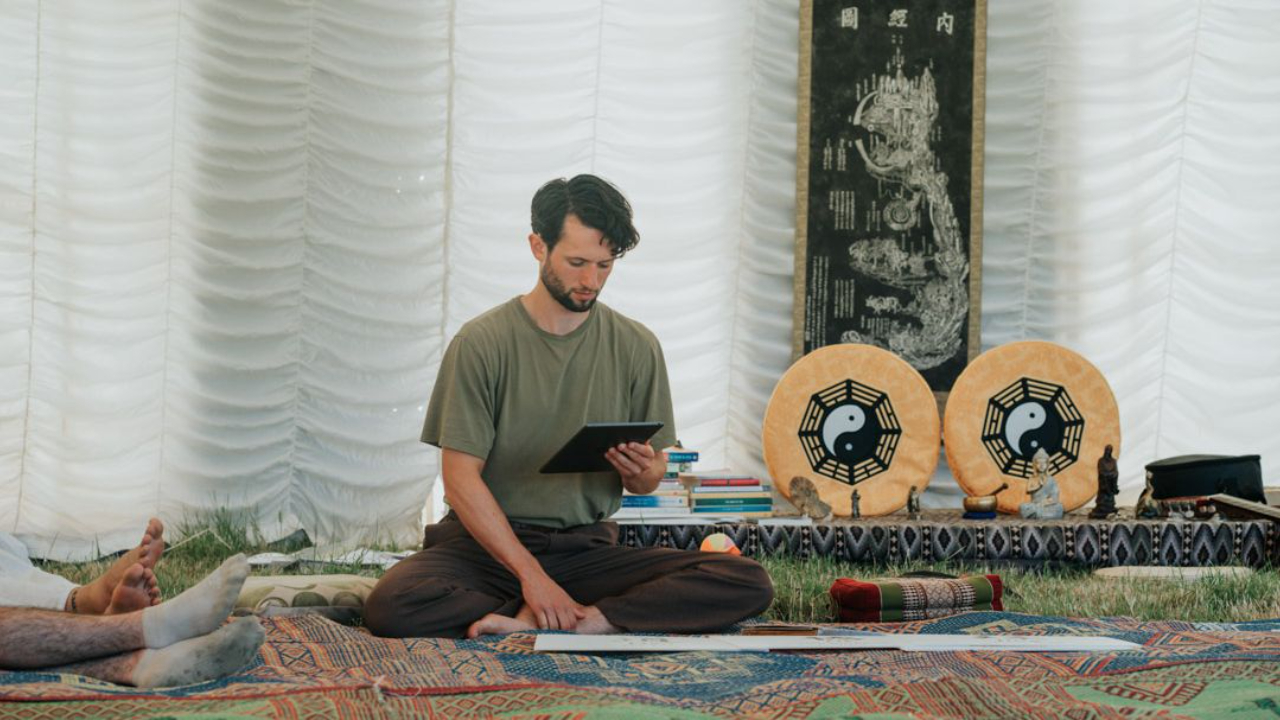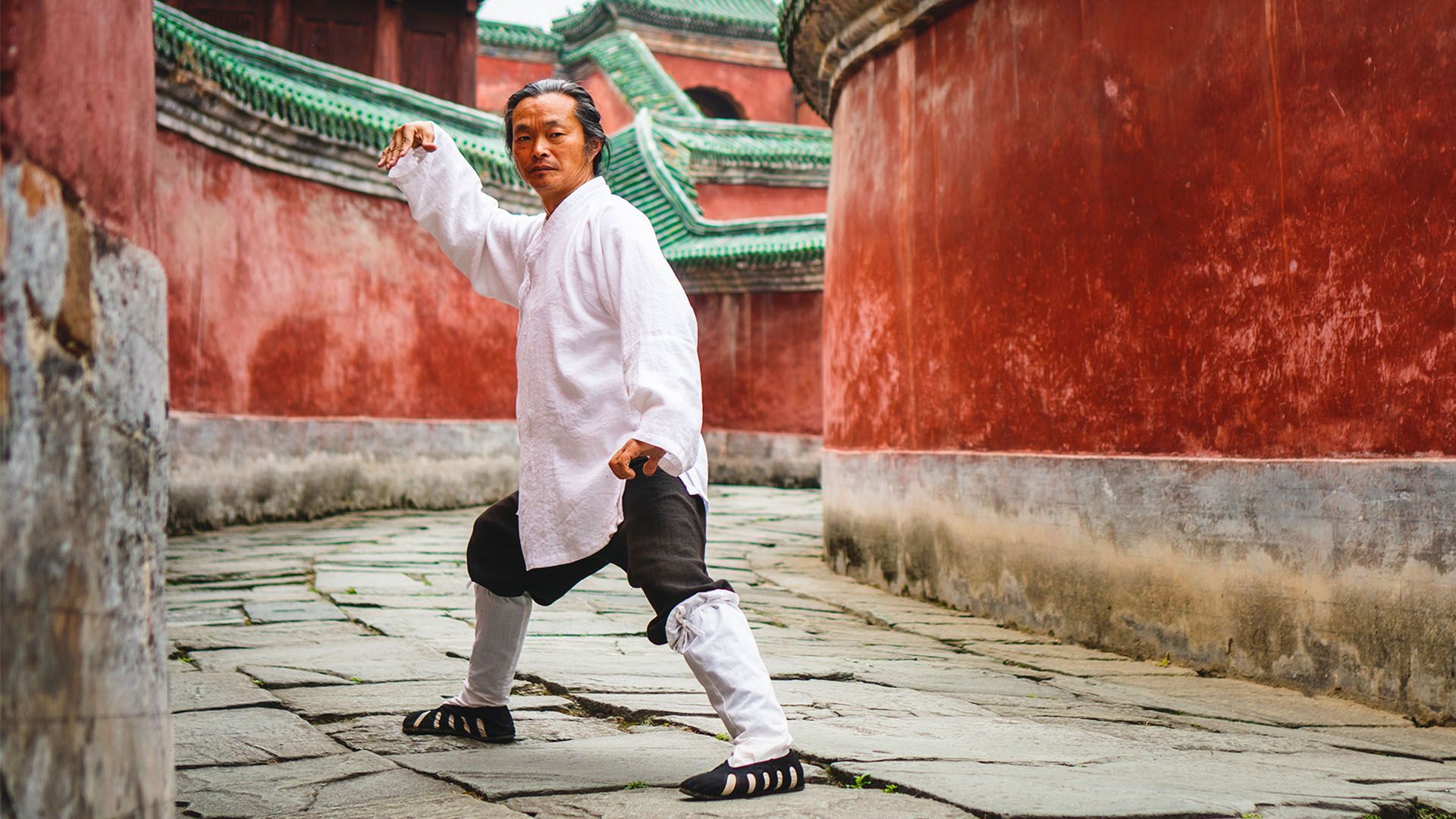Yang Style Tai Chi: A Martial Art for Mind, Body, and Spirit
Feb 28, 2024
Now-a-days the quest for a balanced lifestyle has become more challenging than ever. Recent studies show a significant rise in stress and lifestyle-related diseases, highlighting the need for holistic health solutions. Enter Yang Style Tai Chi, a martial art that harmonizes mind, body, and spirit. Originating from the teachings of Yang Luchan, this practice offers a simplified form accessible to all ages and fitness levels. Through its gentle movements and deep breathing techniques, practitioners find a unique blend of physical exercise and mental relaxation. This article serves as a complete guide to understanding and integrating Yang Style Tai Chi into your daily life, promising a journey towards improved health and well-being.
Table of Contents
Origins and Evolution of Yang Style Tai Chi
The Legacy of Yang Luchan
Yang Luchan, the founder of Yang style Tai Chi, brought the martial art to Beijing in the mid-19th century. Known for his skill, Yang transformed Tai Chi Chuan into a practice suitable for all, emphasizing softness and internal strength. His teachings, rooted in the Chen style, simplified the complex movements, making Tai Chi accessible. Yang's legacy, carried on by his family, particularly Yang Chengfu, has shaped Yang style into a martial art focused on health and self-defense, practiced worldwide.
From Chen to Yang: The Birth of a New Style
The transition from Chen to Yang style Tai Chi represents a significant evolution in this martial art. Yang Luchan learned the Chen style, characterized by its explosive movements and low stances, and adapted it into a more gentle, flowing form. This new style, which came to be known as Yang style, maintained the martial art's essence while emphasizing continuous, smooth movements. The creation of the Yang style made Tai Chi more accessible, promoting its spread across China and eventually around the globe.
Also Read: Chen Style Tai Chi: Beginners Guide
Principles of Yang Style Tai Chi
Harmony of Mind, Body, and Spirit
- Yang Style Tai Chi, a martial art deeply rooted in the Yang family's traditions, emphasizes the unity of mind, body, and spirit.
- Practitioners learn to channel Qi smoothly throughout the body, using movements perfected by Yang Chengfu to promote internal harmony.
- The practice involves a series of postures and movements, including the iconic Single Whip, designed to improve balance and mental clarity.
- Key characteristics of this style include gentle, flowing movements that contrast with the more explosive techniques found in Chen Style.
- Benefits of practicing Yang Style include reduced stress, enhanced flexibility, and a profound sense of peace.
- Principles such as simplifying complex movements help make Tai Chi accessible to beginners and valuable for advanced practitioners.
The Significance of Movements in Sequence
- In Yang Style Tai Chi, each movement flows into the next in a precise sequence, reflecting the martial art's philosophy of continuous motion.
- This sequence, whether in the Long Form with 108 movements or the more accessible 103 or 24 forms, teaches the practitioner patience and focus.
- Key movements like Repulse Monkey and Grasping the Bird's Tail are not just physical exercises but also lessons in applying softness against hardness.
- The sequence of movements is designed to improve posture and stance, enhancing physical health and mental well-being.
- Practicing the sequences allows individuals to deepen their understanding of Tai Chi principles, such as the importance of smooth transitions and maintaining a stable center.
- Tips for mastering these sequences include regular practice, focusing on the flow between movements, and seeking guidance from experienced teachers to refine technique and understanding.
Understanding Tai Chi Chuan
Tai Chi Chuan, a martial art deeply rooted in Chinese philosophy, emphasizes fluid movements and mental tranquility. Originating from the Yang family, it has evolved into various styles, including the Wu and Cheng, each with unique characteristics. The Yang family's contribution to Tai Chi Chuan cannot be overstated, having developed a form that promotes balance, flexibility, and strength.
Key Characteristics:
- Emphasizes slow, deliberate movements.
- Focuses on internal energy, or "Qi."
- Incorporates the principles of yin and yang.
The short form, a simplified version of the traditional Tai Chi form, is particularly popular for its accessibility and ease of learning. It allows practitioners to grasp the fundamentals of Tai Chi without being overwhelmed by the more complex, long forms. Teaching Tai Chi, therefore, often begins with the short form, guiding students through sequences that teach control, coordination, and the art of parry and fu (redirecting force).
Practicing Yang Style Tai Chi
Learning and Simplification
Yang Style Tai Chi, developed by Yang Luchan and later refined by his descendants, including Yang Zhenduo and Yang Jun, emphasizes soft, expansive movements. This style, known for its health and martial arts benefits, offers a simplified form, making it accessible to beginners. The 24 form, a version of Yang Style created by the Chinese Sports Commission, is particularly popular for its ease of learning and practice. Master Yang Jun, a 5th generation inheritor, continues to teach these principles, focusing on the sequence of movements that embody the yin and yang, promoting internal energy flow.
Tips for Simplification:
- Start with the Basics: Begin your practice with the simplified 24 form. This version introduces newcomers to Yang Style Tai Chi's fundamental movements and principles in an accessible way.
- Focus on the Flow: Concentrate on the smooth transition between movements. Understanding how each posture flows into the next simplifies learning and enhances the meditative aspect.
- Regular Practice: Consistency is key. Practicing regularly, even daily, helps internalize the movements and principles, making the practice feel more natural.
- Learn from a Qualified Instructor: A knowledgeable instructor can guide, correct posture, and offer form insights. This significantly simplifies the learning curve.
- Simplify Your Mindset: Approach practice with patience and openness. Simplifying expectations and focusing on the journey make learning Tai Chi enjoyable and fulfilling.
Integrating Yang Style Tai Chi into Daily Life
Incorporating Yang Style Tai Chi into daily routines offers a holistic approach to health and well-being. This style, practiced in parks and communities worldwide, supports physical health, mental clarity, and spiritual tranquility. The traditional Yang style, with its sequence of movements like the "Sparrow’s Tail" and "Fair Lady Works at Shuttles," can be performed anywhere, requiring no special equipment. Master Yang Zhenduo and his grandson Yang Jun emphasize the importance of regular practice to harness the full benefits of Tai Chi, making it a living expression of Tai Chi principles throughout daily life.
Key Characteristics for Daily Integration:
- Flexibility in Practice Location: Yang Style does not require special equipment or a large space. Its open movements and sequences can be practiced in various settings, easing daily integration.
- Mind-Body Connection: This style emphasizes harmony between mind and body. Slow, deliberate movements promote mental clarity and physical health.
- Adaptability: Yang Style's principles, including balance and flow, apply to everyday activities. They enhance posture, breathing, and stress management.
- Health Benefits: Regular practice improves flexibility, balance, and cardiovascular health. It also reduces stress, contributing to overall well-being.
- Community and Solitude: Practicing Yang Style allows for community engagement or personal reflection. This flexibility supports both group classes and solitary practice.
Conclusion
Yang Style Tai Chi transcends mere physical exercise, offering a path to inner peace and physical vitality. Its principles, rooted in the balance of yin and yang, encourage a mindful approach to life's challenges. As we explore the depths of this ancient martial art, we uncover the keys to a healthier, more balanced existence. Whether you're seeking to reduce stress, improve flexibility, or simply find a moment of peace in a hectic day, it offers a gateway to a richer, more fulfilling life. Have you considered how integrating Yang Style Tai Chi into your daily routine could transform your well-being?
FAQs
1. What are the 24 forms of Yang Style Tai Chi?
The 24 form is a simplified sequence of movements, making it ideal for beginners to learn the basics of Tai Chi.
2. How often should I practice Yang Style Tai Chi?
Regular practice, ideally daily, is recommended for the best results.
3. Do I need special equipment to practice Yang Style Tai Chi?
No special equipment is needed, making it easy to practice anywhere.
4. Can Yang Style Tai Chi help with stress?
Yes, its focus on deep breathing and slow movements is effective in reducing stress.
5. Is Yang Style Tai Chi considered a martial art or a form of meditation?
It's both a martial art and a meditative practice, focusing on the harmony of mind, body, and spirit.







